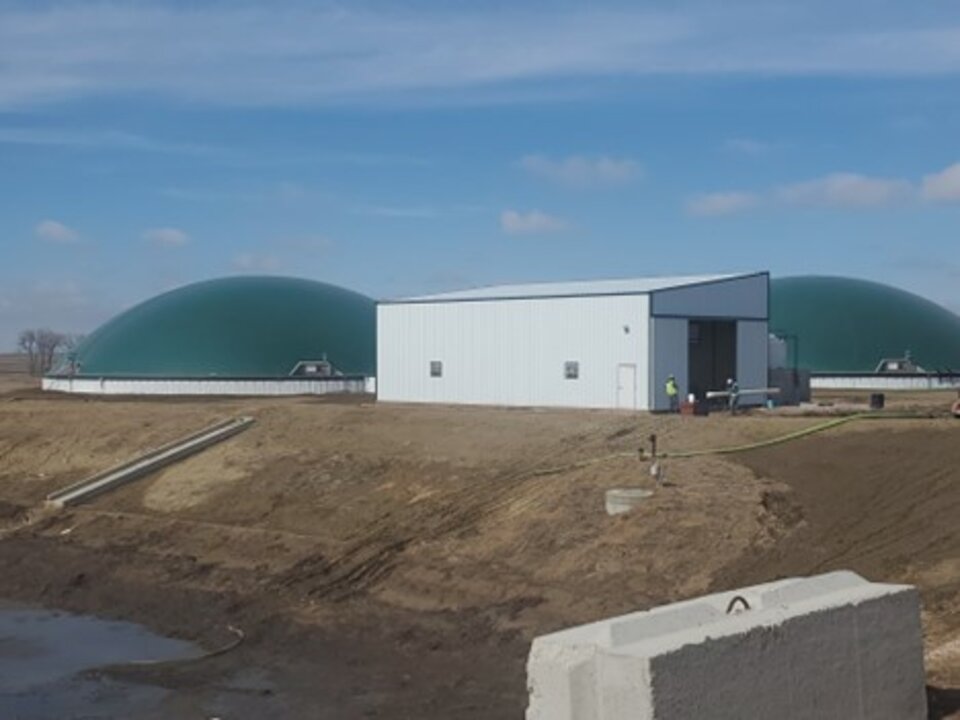Do Digesters Affect the Nutrient Content of Manure?

When incentives are available for renewable energy and/or practices that reduce carbon emissions, livestock and poultry producers tend to show more interest in anaerobic digesters. These producers may also be looking to better manage manure nutrients on the farm. Common objectives are to reduce nutrient content where an imbalance exists – typically an excess of phosphorus (P) – and to optimize the fertilizer value, especially the amount of nitrogen (N) that is readily available for plant use. Perhaps the most appropriate answer to whether digesters affect the nutrient content of manure is “Generally no, but in some ways yes.” Here’s why.
The total amounts of primary fertilizer nutrients (N-P-K) and minerals in digestate – the effluent from a digester – will be very similar to the amounts in the manure [plus those from any co-feedstocks] fed to the digester. The digestion process does not consume these nutrients in producing the biogas, meaning that the amounts of N-P-K that go into a digester come out in the digestate. This is good for the farm that is utilizing manure nutrients effectively now and wants to continue getting that fertility benefit with a digester. For the operation that is looking to manage a nutrient imbalance, though, a digester will not have the desired direct effect of reducing total N, P or K contents.
Digesters do have indirect and other effects on nutrients, though.
Carbon (C) is integral to a soil’s organic matter content and is a nutrient that is important for soil health. Since the purpose of a digester is to break down organic matter and produce methane (CH4) along with some carbon dioxide (CO2), the amount of carbon in the digestate will be less than that in the feedstock. This is generally not considered negatively by livestock producers since crops meet most of their needs for carbon from atmospheric CO2, rather than from the soil. Also, organic matter contributes to odorous compounds coming from manure, so digesters reduce odor potential by breaking down organic matter in a contained system with the digestate having lower organic matter content. Farmers should recognize, though, that digestate might not be as effective as manure in building soil organic matter.
The form of nitrogen in digestate will differ from manure, in that much of the organic N is mineralized into ammonium (NH4), which is a readily available source of N for crop use. This is generally considered favorably in terms of fertilizer value but does not give the whole picture, since substantial amounts of mineralized N can be lost as ammonia (NH3) emissions during storage. Considering storage losses, digestate will likely still offer more first-year available N than manure, but it might contribute less N to crop production overall. A covered-lagoon digester might have benefits in terms of nitrogen retention over a designed (i.e. plug-flow, complete-mix) digester with open storage of digestate, although this deserves further exploration.
Since digesters break down manure solids, the consistency of digestate will be ‘thinner’ than the manure influent, which makes digestate easier to pump and apply to fields. Applying manure nutrients as digestate can accommodate improved timing of application and application to growing crops, which should enhance nutrient utilization. Additionally, some treatment systems perform better when fed digestate rather than untreated manure, which means that digestion could enhance some nutrient-recovery efforts.
The bottom line is that digesters are worth considering where key objectives involve energy recovery, carbon-based incentives, and perhaps odor control. If nutrient management is a primary goal, recognize that digesters will not reduce total phosphorus or nitrogen contents.
Additional information:
Anaerobic digesters UNL Animal Manure Management Team manure.unl.edu
Swine manure digester case study Livestock & Poultry Environmental Learning Community LPELC.org